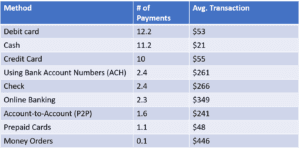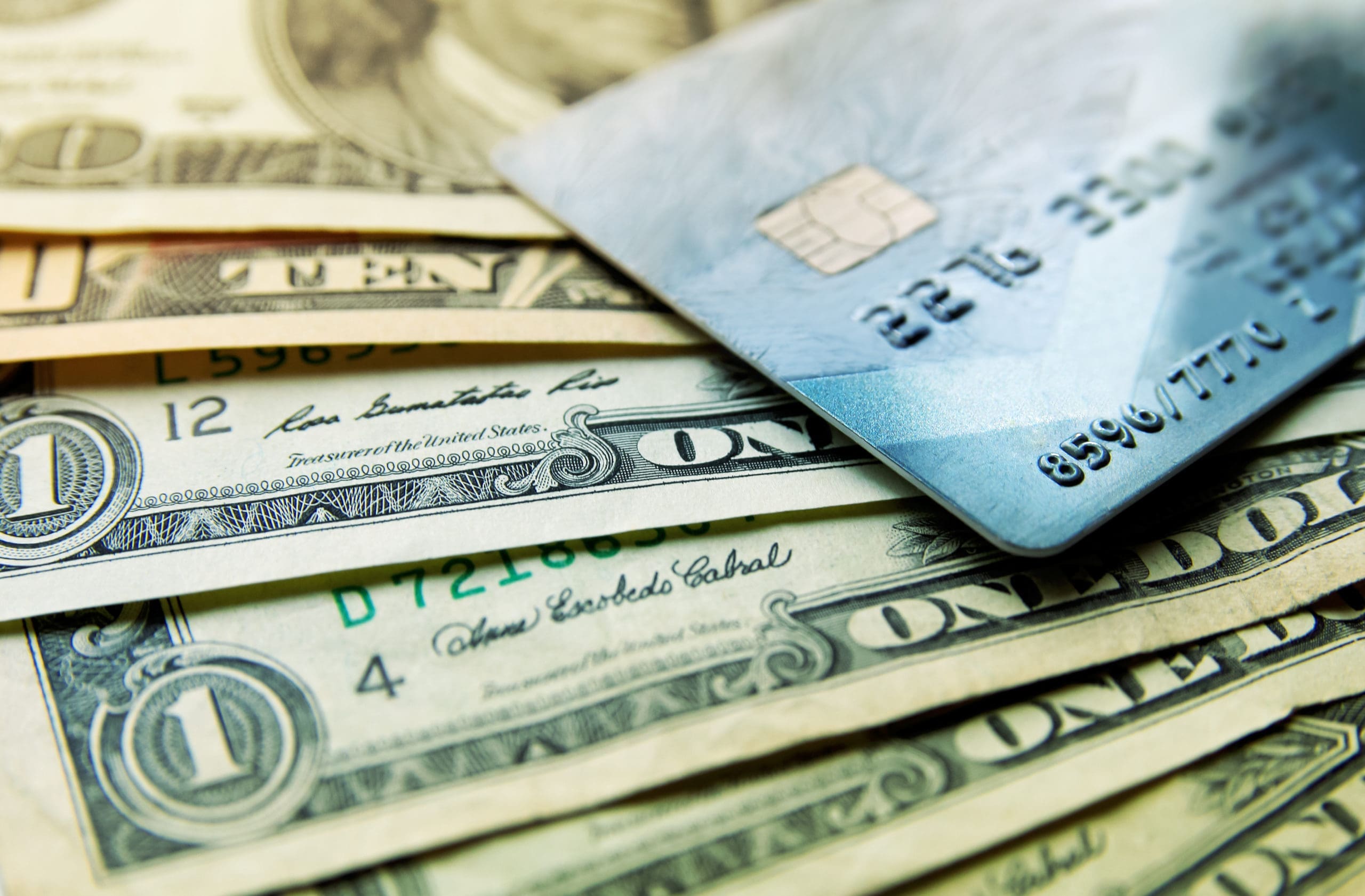Debit Cards Replace Cash
The idea of a cashless digital economy might have sounded absurd up until a couple of decades ago. Today, however, it has become a reality. Data from 2019 shows that an increase in Americans that prefer digital payment methods such as debit cards, credit cards, mobile wallets, and wearables over cash and check payments.
Cash is Getting Displaced: Fed Report
Americans are not strangers to the idea of plastic money; however, the displacement of cash with digital money has accelerated in recent years.
The 5th Diary of Consumer Payments Choice (DCPC) – the latest survey conducted by the Federal Reserve banks of Boston, Atlanta, Richmond, and San Francisco in 2018 – found for the first time, debit cards have become the most commonly used type of payment, overtaking cash.
The DCPC survey asked a representative sample of 2,873 participants to document all their purchases and bill payment transactions for four days in October.
The key findings from the survey include:
- 28% of payments were made using debit cards, making them the most commonly used payment instrument in October 2018.
- 26% of payments were made in cash.
- 23% of payments were made using credit cards.
- On average, 43 payments were made by Americans during October.
Debit Card Usage: Higher Frequency and Higher Dollar Value
A key finding from this survey over previous surveys is that the participants not only used debit cards more frequently, but the dollar value of these transactions was also higher compared to cash transactions.
The table below summarizes the most notable data points from the survey:

Compared to 2017, the average number of debit cards, credit cards, and online banking transactions increased by 1.3, 1.6, and 0.6, respectively, in 2018. The use of electronic devices and mobile phones to make payments also increased in 2018.
- 24% of all payments made by consumers in 2018 involved the use of an electronic device.
- 8% of all payments made by consumers in 2018 involved the use of a mobile phone.
Studies in Recent Years Show Preference for Digital Payments
A 2018 survey by payment processor TSYS of a diverse group of 1,222 consumers about their preferred mode of payment found:
- 54% of them said that they prefer to pay using debit cards
- 26% of them said that they prefer to pay using credit cards, and only
- 14% of them said that they prefer to pay in cash.
Another survey conducted among a representative sample of millennials said that nearly 27% of people in the age group of 18 – 24 years had loaded a debit card into their mobile payment app, which they use to make purchases.
A Trend Toward Using Credit Cards
Another example of the move to digital payments is the number of people who use credit cards to make monthly payments and pay their credit cards in full. The Financial Industry Regulatory Authority’s (FINRA) 2018 National Financial Capability Study (NFCS), of over 25,000 participants polled about their credit card usage, found among other things; that 54% of the participants stated that they always pay their credit cards in full. When the same study was conducted in 2009, only 41% of the participants stated that they paid their credit cards in full.
P2P (Peer-to-Peer) Electronic Payment Trends
The DCPC survey found the percentage of consumers who use P2P payments increased from 36% in 2017 to 44% in 2018. Similarly, a 2018 Bank of America report on the trends in consumer mobility, found that a growing majority of young Americans prefer P2P payments over other modes of payments. The rise of Peer-to-Peer (P2P) payments platforms like Zelle, Venmo, PayPal, CashApp, and similar services have helped contribute to the increase of P2P payments.
The key findings of the Bank of America report include:
- 51% of millennials use P2P payments.
- 37% of Gen Xers use P2P payments.
- 68% of young Americans who use P2P payments say that it is convenient and saves time.
- 48% of young Americans who use P2P payments do so because their friends are also using it.
Check Payments Continue to Decline
As debit cards, credit cards, and P2P payments rise, correspondingly payments by check continue to decline.
Data from the 2016 Federal Reserve Payments Study found that between 2012 and 2015, the number of debit cards, credit cards, and automated clearing house (ACH) payments grew at a rate of 5.3%. During the same period, the number of check payments declined 4.4 percent by number.
Further, the most recent data from the 2018 Annual Supplement to the Federal Reserve Payments Study confirms that debit cards, credit cards, and ACH payments are going mainstream, while large-institution check payments showed an accelerated decline of 4.8 percent by number from 2016 to 2017.
Choose IntelliPay – A Leader in End-to-End Payment Solutions
IntelliPay provides a wide array of end-to-end payment solutions and alternative payment models that have revolutionized the payments processing industry.
With its highly advanced cloud-based payment platform, IntelliPay allows you to accept payments over the phone, in person, online, mobile, ACH, or via IntelliPay’s automated recurring payment module. To schedule a free consultation call 855-872-6632 or email sales@intellipay.com.


